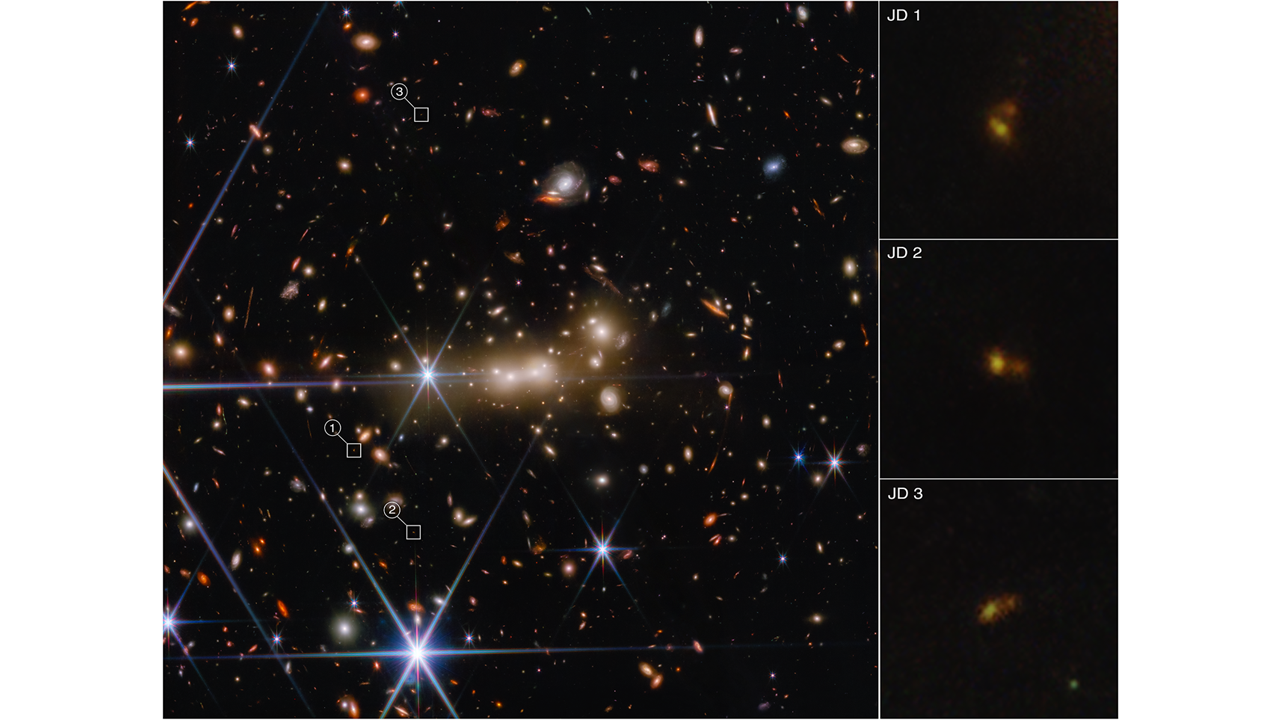NASA’s James Webb Space Telescope was specifically designed to detect the faint infrared light of very distant galaxies to provide astronomers with an overview of the early universe. This is a very mysterious period, because the nature of the early galaxies is not well known and understood. But galaxy clusters form a gravitational lensing effect that magnifies the most distant objects, which makes it possible to examine them in more expressive details.

A trio of astronomers from the European Space Agency and Johns Hopkins University with the help of James Webb observed the distant galaxy MACS0647-JD and found something interesting. Thanks to the gravitational lensing of the massive galaxy cluster MACS0647, it magnified the object behind by three separate images JD1, JD2 and JD3 with eight, five and two times magnification, respectively.
“When we observed MACS0647-JD with Hubble 10 years ago, it was just a pale red dot. Then we could say that this is a young tiny galaxy formed in the first 400 million years of the universe’s existence. When we looked at the object again thanks to James Webb, we were able to examine it in the best detail. It turned out that this is not one, but two separate objects. While we are thinking, these are two young galaxies at the stage of merging, or they are just two star clusters. If it turns out that this is a merger of galaxies in a very early universe, I will be really excited!” explained the discovery of Tiger Yu-Yang Hsiao from Johns Hopkins University.
According to scientists, before the launch of James Webb, scientists could not study galaxies in detail in the early Universe. There were only a few dozen young galaxies known to science. But now a new generation space telescope is taking pictures with hundreds of the most distant galaxies. These discoveries will help to understand how the universe evolved over time, and how our Milky Way galaxy formed.
Earlier we reported on how James Webb photographed the Pillars of Creation.
According to NASA
Follow us on Twitter to get the most interesting space news in time
https://twitter.com/ust_magazine

